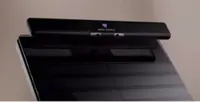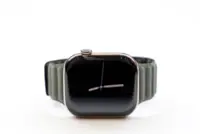Regularly monitoring your blood pressure is essential to ensure it remains within the ideal range.
ACCORDING to the National Health and Morbidity Survey 2019, three out of 10 Malaysians live with hypertension, equating to 6.4 million people being affected. However, only half of them are aware of it, as high blood pressure can be a silent killer.
There are generally no obvious symptoms until complications arise. Most of the time, patients only discover they have hypertension when they suffer a stroke, heart attack or kidney failure, or they may discover it incidentally if they have a blood pressure machine at home.
Sunway Medical Centre, Sunway City cardiologist Datuk Dr Yap Yee Guan explains that 95% of the time, primary hypertension, also known as essential hypertension, has no underlying causes.
However, the remaining 5% have secondary causes due to congenital problems such as narrowing of the kidney arteries or tumours of the adrenal glands which cause an excessive amount of hormones in the body, resulting in higher blood pressure.
Dr Yap notes, “The older we are, the more likely we may develop high blood pressure. Both men and post-menopausal women exhibit a higher propensity for developing high blood pressure. Other key factors include family history, a sedentary lifestyle and chronic stress. Smoking, elevated cholesterol levels, inadequate dietary habits and obesity also play significant roles in elevating blood pressure levels. Additionally, individuals grappling with diabetes or other underlying health disorders may experience heightened blood pressure.”
Diagnosing hypertension
Blood pressure exhibits a dynamic that fluctuates over 24 hours, where during the day, it experiences an increase, peaking at midday, while diminishing during the afternoon and night.
Multiple measurements are essential for a comprehensive understanding, particularly during the initial stages of diagnosis. Analysing the complete 24-hour profile is imperative in determining whether an individual is experiencing hypertension.
Doctors play a crucial role in differentiating genuine hypertension from white-coat hypertension. The latter occurs when elevated blood pressure results from the anxiety or apprehension associated with medical settings.
Dr Yap outlines two distinct approaches to differentiate between white coat hypertension and essential hypertension, or possibly a combination of both. “Firstly, individuals are instructed to conduct blood pressure measurements in the comfort of their homes.
“This method capitalises on the absence of doctor-related stressors at home. By doing so, if their blood pressure readings remain elevated, it implies the presence of genuine hypertension. This practice entails consistent monitoring over a week, with patients subsequently presenting their readings to a doctor.
“The second method involves utilising ambulatory blood pressure measurements (ABPM), which employs a portable blood pressure device. Similar to wearing an old-style Walkman, this device features a cuff that periodically measures blood pressure, even during sleep.”
This 24-hour monitoring unveils the entire circadian profile of blood pressure fluctuations which are otherwise unobservable through self-measurement.
Lifestyle modifications and treatments
The initial step in managing hypertension is guiding individuals towards lifestyle adjustments. This encompasses a reduction in the consumption of salty foods, as excess salt is detrimental for hypertensive patients.
Emphasising exercise and weight loss within the lifestyle, assuming blood pressure is within manageable levels, is also crucial to lowering hypertension.
Furthermore, adopting a Mediterranean-style diet rich in fruits, vegetables, seeds and whole grain products is advisable. This holistic approach constitutes the essence of lifestyle modification, wherein dietary improvements and physical activity take centre stage in treatment.
Following these lifestyle changes, the next phase involves introducing medication and maintaining regular follow-ups with your doctor.
The overarching objective is to curtail the mortality and morbidity associated with hypertension. Generally, the target blood pressure to strive for should be less than 140 over 90.
Lifestyle modifications should invariably be advocated for all patients. While pharmaceutical therapy remains the cornerstone of treatment, the emergence of renal denervation serves as a high-potential adjunctive treatment along with medication.
Renal denervation involves inserting a catheter into the renal artery that supplies blood to the kidneys. The catheter then delivers radiofrequency energy to the nerves surrounding the kidney artery, which will reduce hormone secretion, thereby lowering the blood pressure.
Such technology signifies a positive outlook for the future, providing high hopes for the discovery of more effective non-pharmacological treatments in managing hypertension and for improving patient outcomes.
For more information, contact 03-7491 9191.






